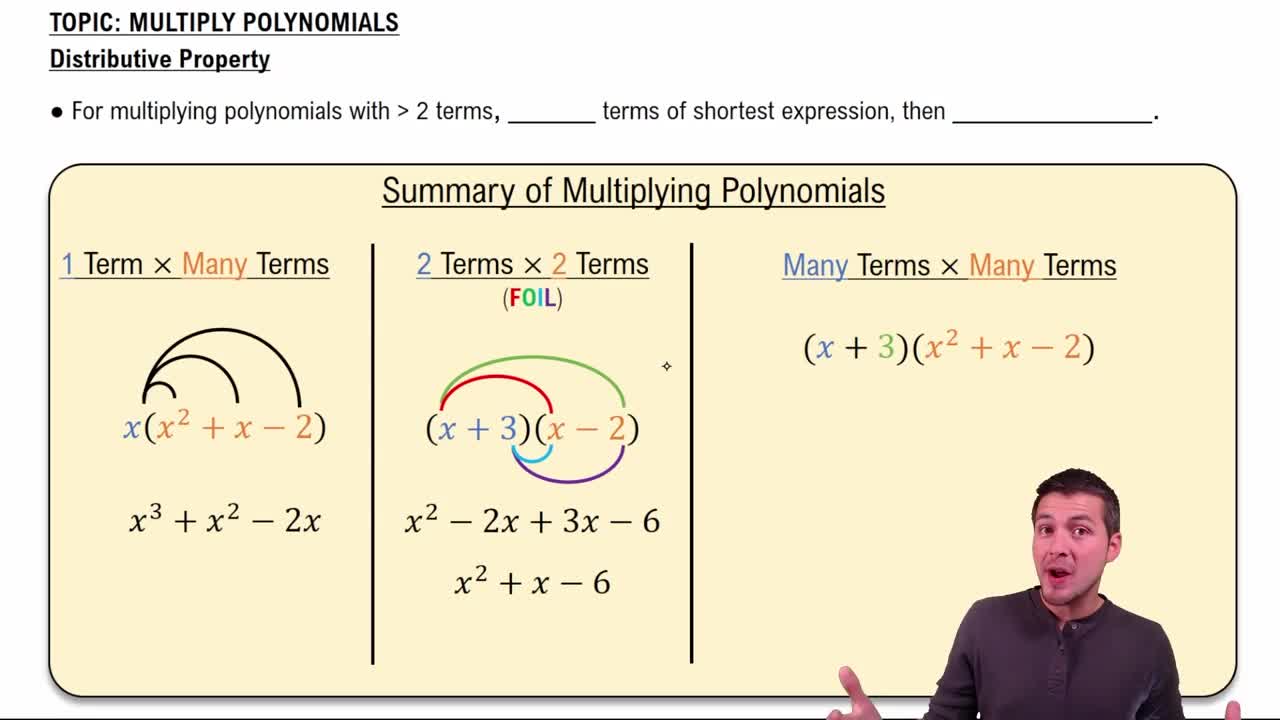Here are the essential concepts you must grasp in order to answer the question correctly.
Multiplying Binomials
Multiplying binomials involves applying the distributive property, often referred to as the FOIL method (First, Outside, Inside, Last). This technique helps in systematically multiplying each term in the first binomial by each term in the second binomial, ensuring that all combinations are accounted for. In the given expression, (√6 + √2)(√6 - √2), this method will yield a difference of squares.
Recommended video:
Multiply Polynomials Using the Distributive Property
Difference of Squares
The difference of squares is a specific algebraic identity that states a² - b² = (a + b)(a - b). This identity is particularly useful for simplifying expressions where one term is subtracted from another, both of which are perfect squares. In the context of the problem, recognizing that √6 and √2 are the 'a' and 'b' allows for a straightforward simplification of the product.
Recommended video:
Solving Quadratic Equations by Completing the Square
Simplifying Radical Expressions
Simplifying radical expressions involves reducing the expression to its simplest form, which often includes combining like terms and removing any perfect squares from under the radical sign. This process is essential for clarity and ease of further calculations. In the given problem, after applying the difference of squares, any resulting radical expressions should be simplified to ensure the final answer is presented in its simplest form.
Recommended video:
Radical Expressions with Fractions
 Verified step by step guidance
Verified step by step guidance Verified video answer for a similar problem:
Verified video answer for a similar problem:

